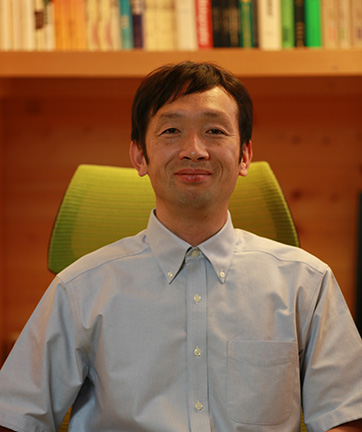
Yoshitaka Kurosaka
In this installment of Senior Member Insights, OPN talks with Yoshitaka Kurosaka. Yoshitaka is a researcher at Hamamatsu Photonics K.K., Japan. Before joining Hamamatsu, he worked at Sanyo Electric Co. Ltd. on display systems R&D. Yoshitaka’s work currently focuses on the R&D of a new class of semiconductor lasers and electro-optical (EO) components using nanotechnology. Recently, his team has developed lasers that can emit static 2D beam patterns such as multi-dots, grid patterns, characters and even gray-scale images (like photographs) directly from a semiconductor chip, without any lens or scanning system.
What first interested you in pursuing science?
When I was nine or ten years old, my father and I constructed a “telegraph.” This extremely simple structure consisted of an electromagnet made from a burned nail and a coil, which we processed ourselves, a steel plate cut from a can, a kamaboko board (the wooden base plate for Japanese fish sausage) and a commercial dry battery. I clearly remember my excitement of converting everyday materials into an electrical appliance. As in my childhood, I am still excited and inspired when trying to fabricate or envision new EO components.
What aspect of your current work do you find the most interesting or exciting?
I believe that many of today’s functional optical systems, such as display systems, will be advanced and miniaturized with time. In my opinion, ultimately the simplest system that utilizes highly functional EO components will stand the test of time. As such, whether a product is successful or not will depend on its functional EO components. My current work involves the development of highly functional EO components of on-chip size, which I find very interesting and exciting.
What is one piece of advice that you wish you were given as a student/early in your career?
I think it is important that I maintain two opposing viewpoints within my own mind. One perspective penetrates “deeply” into my specialized field and the other scans “widely” toward all related fields. Of course, making progress deeply in my specialized field is important, but new ideas can occasionally be conceived from another field and lead to a breakthrough. I try to maintain both perspectives.
What professional resources do you rely on to stay active and engaged with your field?
I have found that being a part of a conference, like CLEO, to be effective. This gives me a great opportunity to keep in touch with cutting-edge technologies. In addition, whenever possible, I readily accept journal review requests for scientific papers, which immensely helps me keep my knowledge up-to-date because it requires that I read many related papers.
What tips for successful networking do you have for early-career professionals?
This is one of my own challenges and I do not have any tips. However, I always try to understand a wide range of opinions, even those that differ from my own.
What advice do you have for young scientists who are about to interview for their first job?
In my opinion, the most important thing is what I want to accomplish through the job, rather than where it would be or which position I would take. For example, if my aim is “I want to save a human life,” the jobs that could achieve this aim are not limited to only becoming a doctor. From a wide-ranging perspective, manufacturers of medical devices or even of measurement equipment for drugs are important as well. If I rigidly consider only becoming a doctor, the way could become very hard.
What are daily habits that help you to be successful?
Unless it is a rainy day, I usually jog at a slow pace around the park near my home in the hour or so before my children wake up. This keeps my brain clear and helps me alleviate stress and stiff shoulders. In addition, my daily one-hour commute to the office provides a good time for free-thinking.
How important are leadership roles in career development, and how do you hone your leadership skills?
As of now, this is an unexplored field for me, and one of my challenges. I would like to know more about developing myself as a leader.
At this point in your career, what are you most looking forward to next?
I hope to realize a “natural three-dimensional display” comprising my original functional EO components. I believe that the performance of such a highly functional system ultimately depends on its EO components or modules. My next goal is to realize the on-chip highly functional EO components. While this is a very difficult task, I think it is worth tackling.
If you weren’t in the sciences, what would be your dream career?
My current job is my true vocation, but I am also interested in music composition, painting, and photography. I would have to have some kind of creative career.
